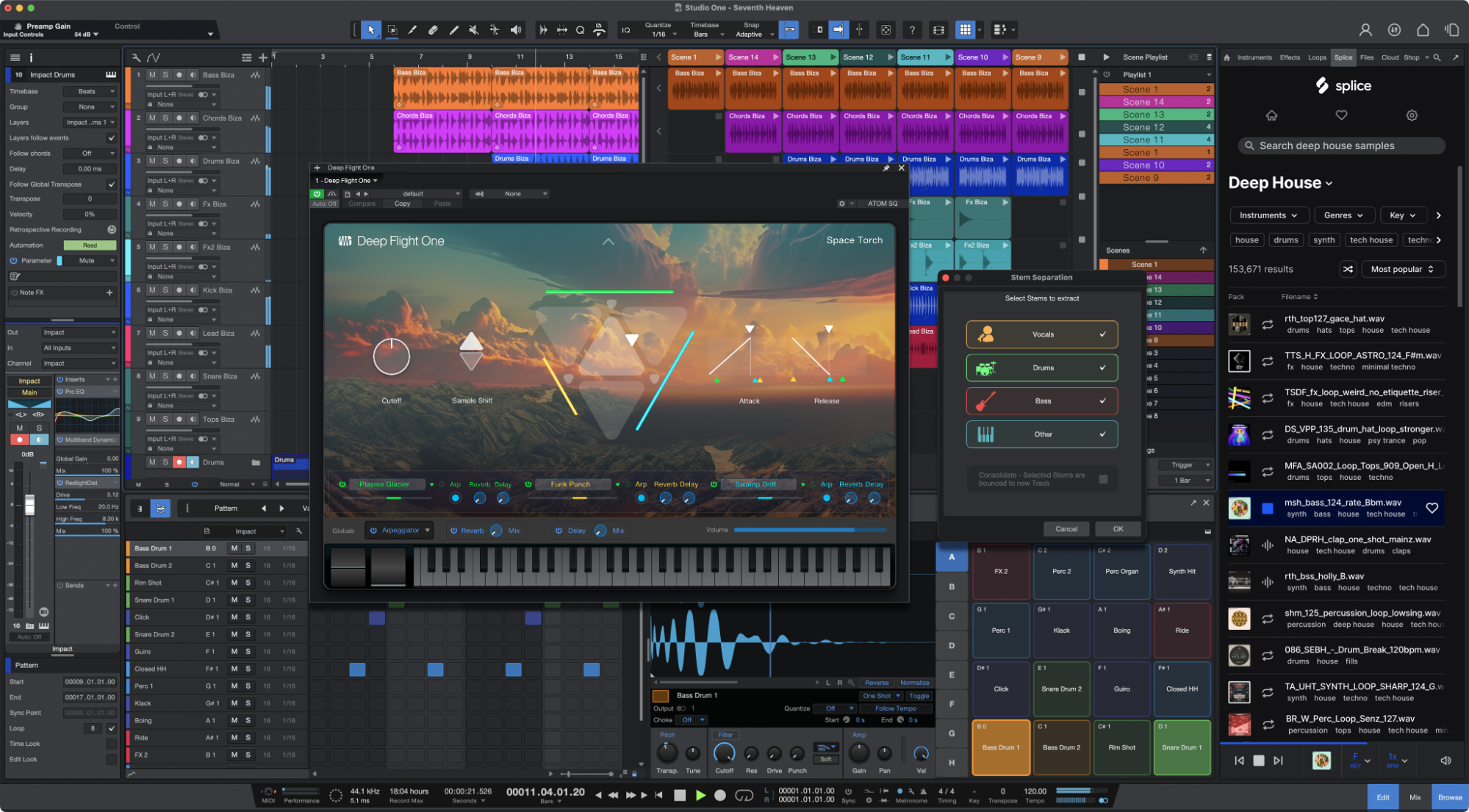Studio One becomes the first DAW to integrate Splice as PreSonus launches Studio One Pro 7
Browse and access Splice’s million-strong sample library from within Studio One Pro and take advantage of its AI-powered Search with Sound feature to discover similar samples

PreSonus has released the latest version of its flagship DAW Studio One, with a host of new features including first-of-its-kind Splice integration, stem separation, and a Live-style clip launcher.
With the release of its seventh version, Studio One Pro becomes the first DAW to fully integrate sample platform Splice, allowing its users to browse, preview and access its library of millions of royalty-free samples without leaving their project.
What’s more, Studio One users can make use of Splice’s AI-powered sample search feature; simply drop in an audio clip or capture a selection within a track and Splice will suggest similar sounds that are compatible in key, tempo and timbre. Existing Splice subscribers will be able to access the full extent of its library through Studio One Pro, while users new to Splice can take advantage of a collection of thousands of free sounds without subscribing.
Speaking to MusicRadar about the Splice integration, Splice CEO Kakul Srivastava said: "If you go to producers today and you look at their workflow, you'll often see their DAW open, and you'll see Splice open right next to it. People want to have that really integrated experience. So we started thinking: 'how do we do it even better, and how do we get even closer?'"
With the release of Studio One Pro 7, Srivastava says Splice is "able to be part of the creative process, and almost be an assistant to the producer – right in their workflow. We can listen to what they're working on, we can ‘Search by Sound’ and provide them the right content, in line with what they're doing. That's incredibly powerful.”
Splice's Search by Sound isn't the only AI-powered feature in Studio One Pro; the DAW now offers stem separation, letting you isolate instrumental stems by separating fully mixed songs into four separate tracks. PreSonus has also introduced an Integrated Launcher, a grid for launching MIDI patterns and audio loops on-the-fly, in a similar fashion to Ableton Live’s Session View. Unlike Live, though, the Launcher is integrated into Studio One’s arrangement window.
Studio One Pro 7 also features a new virtual instrument, Deep Flight One. Drawing on an extensive sound library made up of vintage synths, modular systems, vocal samples and field recordings, the multi-timbral instrument is capable of producing complex and evolving pads, drones and soundscapes, processed through a variety of integrated effects.
Want all the hottest music and gear news, reviews, deals, features and more, direct to your inbox? Sign up here.
PreSonus has condensed the two previously available editions of Studio One, Studio One Artist and Studio One Professional, into a single, full-featured DAW named Studio One Pro that comprises all available extensions and virtual instruments. It’s also announced a faster feature release cycle that promises several major updates each year; previously, Studio One users have waited two to three years for new versions of the DAW to drop.
Studio One Pro 7 is available as a perpetual license for $199.99, with one year of updates included. Existing owners of Studio One Artist Edition and Professional Edition can upgrade for $149.99. PreSonus is also offering a Pro+ subscription that gives you access to additional content, priced at $19.99 per month.
For a full overview of what’s new in Studio One Pro 7, visit PreSonus’ website.



I'm MusicRadar's Tech Editor, working across everything from product news and gear-focused features to artist interviews and tech tutorials. I love electronic music and I'm perpetually fascinated by the tools we use to make it.